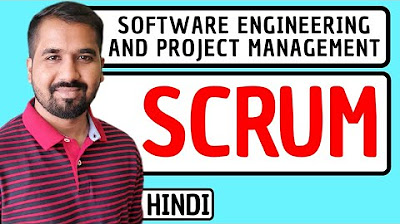Como eu faço Reunião de Planejamento (Planning) - Product management
Summary
TLDRIn this video, Diego Becker discusses agile product management, focusing on daily and planning meetings. With over five years of experience, Becker shares insights on improving these meetings. He compares methodologies like Kanban and Scrum, explaining how to conduct effective planning sessions every two weeks. Becker emphasizes the importance of prioritizing tasks for the upcoming sprint, detailing the process from backlog refinement to development. He also touches on the continuous flow of Kanban versus the sprint-based approach of Scrum, providing practical tips for product managers.
Takeaways
- 😀 Diego Becker introduces a video series on product management, focusing on agile meetings and sharing insights from his experience.
- 📅 The 'Planning' meeting, also known as 'Planing,' occurs every two weeks and typically lasts for one hour, aligning with the two-week Sprint cycle.
- 🔍 The main goal of the Planning meeting is to determine what the team will work on in the upcoming two weeks, involving the development, design, and business analyst teams.
- 📈 The video compares different methodologies, such as Kanban and Scrum, highlighting the continuous flow in Kanban versus the fixed cycle in Scrum.
- 📝 It's crucial to prioritize items during the Planning meeting, ensuring that the team focuses on the most important tasks for the Sprint.
- 🛠 The 'Refinement' meeting is highlighted as a preparatory step before Planning, where items are detailed and clarified for better understanding and prioritization.
- 🔄 The speaker emphasizes the importance of understanding the team's 'flow' or throughput, which is the amount of work the team can complete in a Sprint cycle.
- 📊 The video provides a practical example of how to pull items from the backlog into the Sprint, discussing the dynamics of item selection and team collaboration.
- 💬 Diego encourages viewers to engage with the content, asking questions in the comments and providing a link to further resources for understanding user stories and backlog management.
- 🎓 The video concludes with a promotion for Diego's course on product management, inviting viewers to learn more through structured learning at PRD Academy.
Q & A
What is the main focus of the video by Diego Becker?
-The main focus of the video is to discuss product management, specifically agile meetings and daily tips learned from over five years of experience in product management.
What are the two methodologies mentioned in the video for product management?
-The two methodologies mentioned are Kanban and Scrum, which are commonly used in product management.
How often does Diego Becker recommend holding planning meetings in an agile environment?
-Diego Becker recommends holding planning meetings every two weeks, which aligns with the typical sprint cycle of two weeks.
What is the purpose of the planning meeting in the context of the video?
-The purpose of the planning meeting is to determine what the team will work on in the next two-week sprint cycle.
What is the difference between a backlog and a sprint backlog according to the video?
-The backlog contains all the items, such as user stories and epics, that the team might work on. The sprint backlog, on the other hand, contains the items that are selected to be worked on during the current sprint.
What is the term used for the meeting that details and clarifies items in the backlog?
-The term used for the meeting that details and clarifies items in the backlog is 'refinement.'
How flexible is the refinement meeting in terms of scheduling and duration?
-The refinement meeting is quite flexible; it can be held weekly or bi-weekly, and it can last from half an hour to an hour.
What does Diego Becker suggest regarding the number of items to be refined or developed in a sprint?
-Diego Becker suggests balancing the number of items to be refined or developed with the size of the team to avoid overwhelming them and to ensure clear prioritization.
What is the term used to describe the amount of work a team can complete in a cycle?
-The term used to describe the amount of work a team can complete in a cycle is 'velocity.'
What is the role of daily meetings in the context of the video?
-Daily meetings, or 'daily Scrums' in Scrum, are used to move items through the development process, from development to review, and potentially to deployment.
How does the process of pulling items into a sprint differ between Scrum and Kanban?
-In Scrum, items are pulled into a sprint during a planning meeting, while in Kanban, items are continuously pulled from the backlog for refinement and development as the team has capacity.
Outlines

This section is available to paid users only. Please upgrade to access this part.
Upgrade NowMindmap

This section is available to paid users only. Please upgrade to access this part.
Upgrade NowKeywords

This section is available to paid users only. Please upgrade to access this part.
Upgrade NowHighlights

This section is available to paid users only. Please upgrade to access this part.
Upgrade NowTranscripts

This section is available to paid users only. Please upgrade to access this part.
Upgrade NowBrowse More Related Video

Scrum Explained in Hindi l Software Engineering and Project Management Course

What is Product Management? Definition and Examples

Como lidar com riscos na Gestão Ágil

[재도전패키지] 17 재도전기업을 위한 효율적 팀 구성

Pra você ficar fera em Discovery Interno - Product Management

Scrum Methodology | Scrum Master Tutorial | Simplilearn
5.0 / 5 (0 votes)